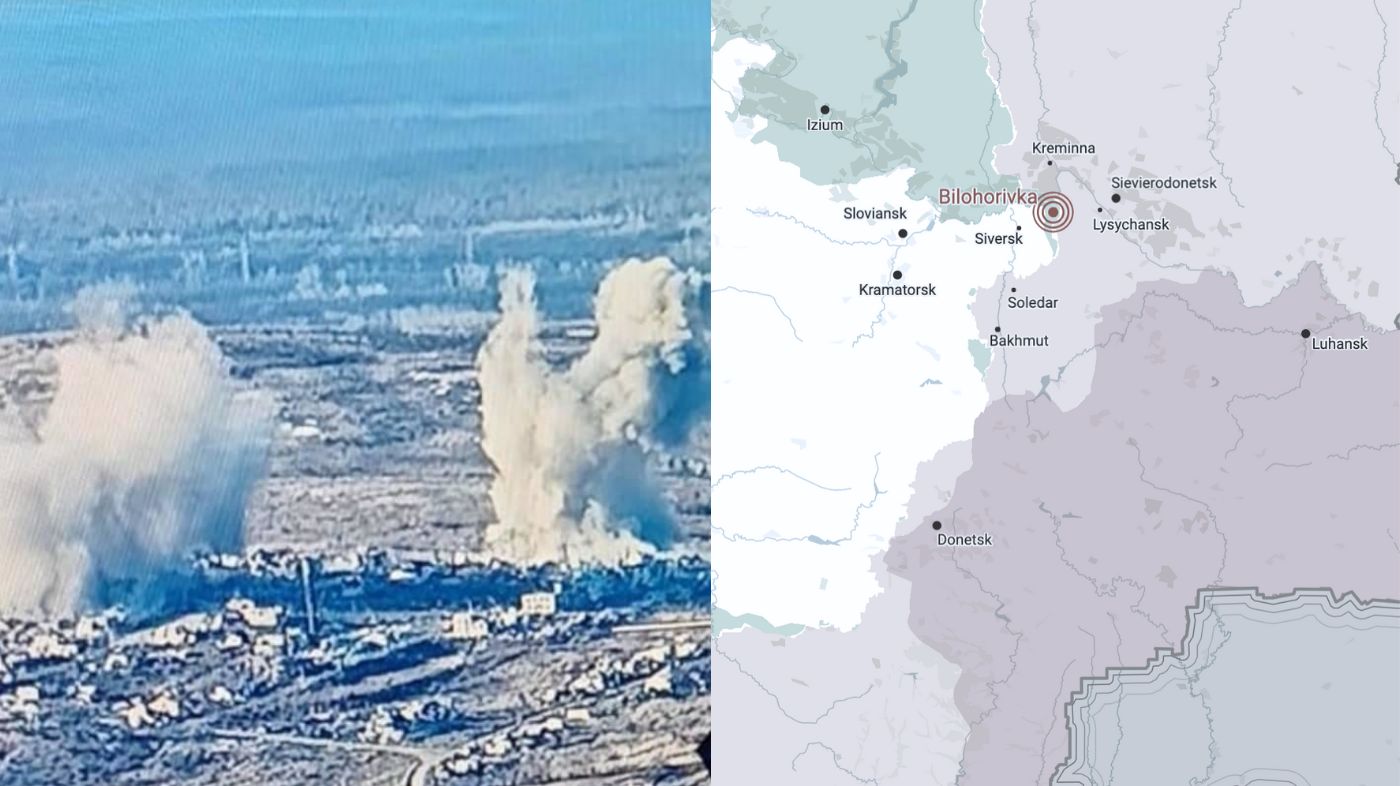The Ukrainian frontline is a precarious place. Shortages of ammunition and manpower and a lack of air defense have led to creeping Russian advances. But there are places on the map that keep heroically resisting daily Russian attacks.
One of them is Bilohorivka, a town that held despite Russian advances to the south and north. Its secrets lie not only in fortifications, which Ukraine is hastily constructing on all fronts as it shifts to active defense, but also in its experienced and battle-hardened units. However, despite the stoic defense, Russian overwhelming manpower, KAB gliding bombs, and FPV drones continue to wear down the outnumbered Ukrainian defenders' positions, facilitated by their shortage of artillery ammunition
We have studied satellite footage and witness accounts to illustrate for you the pressure that many such cities on the Ukrainian frontline are expected to face.
Bilohorivka still holds, but if Ukraine does not rapidly conduct its much-delayed mobilization, and is not backed with the drastically-needed ammunition, the Russian tactics we describe are sure to wear away at the Ukrainian defense here and elsewhere.
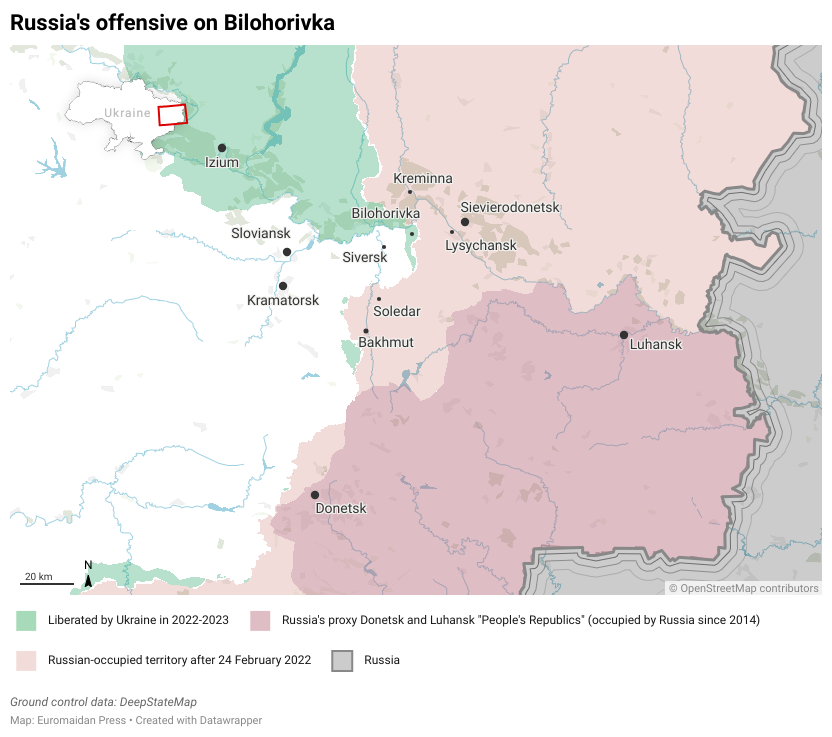
Why do Russian generals care about the Siversk direction?
As shown on the territory control map below, since the Ukrainian Armed Forces’ blitzkrieg liberation of the Kharkiv Oblast in September 2022, there has been minimal frontline movement in the Siversk direction, and, more precisely, Bilohorivka.
This is despite battles near Bilohorivka never ceasing for even a day. Furthermore, just south of this area, the infamous and intense battle for Soledar continued until January 2023, when it was occupied by Russian forces.
Additionally, on the opposite side of the river, fierce combat in the forest near Kreminna has endured for over a year, with Russians making some tactical advances but unable to achieve significant breakthroughs in defense.
In late 2022 and early 2023, it became evident that neither side could significantly shift the frontline in the area.
Despite occasional tactical losses of positions throughout the year, Ukraine managed to inflict significant casualties on advancing units, often decimating them entirely. The presence of Ukrainian troops at the Lysychansk flank compelled Russian command to keep significant forces in the area, apprehensive of potential Ukrainian counter-attacks toward Lysychansk from the west and the Soledar area from the north.
Eventually, the situation began to deteriorate for Ukrainian units due to a lack of rotation and artillery ammunition. Thinly spread troops with little artillery ammo were no longer able to hold undermanned positions or provide artillery barrages to stop Russian forces from advancing.
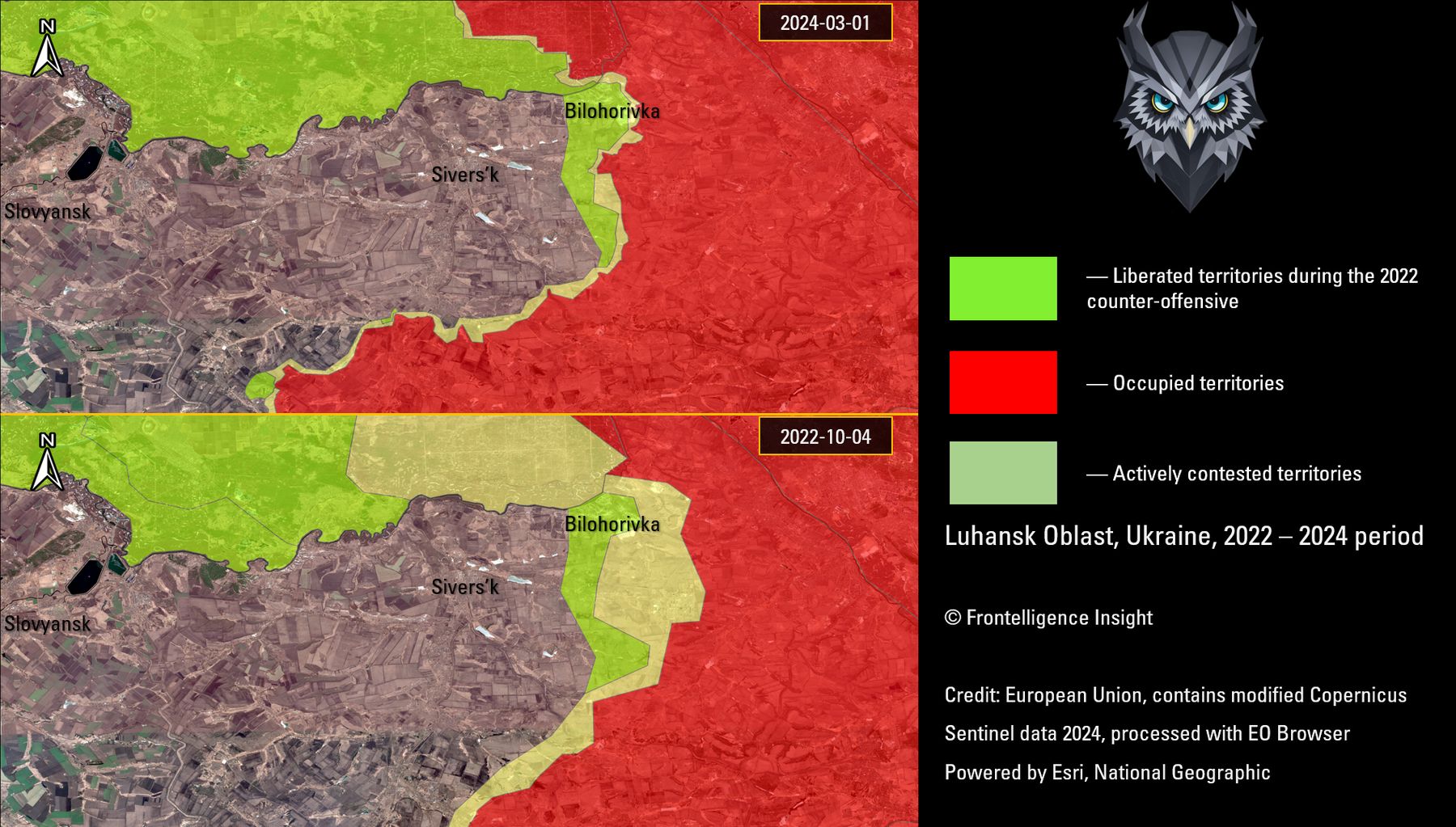
This area is first and foremost significant due to its role in providing access to the Sloviansk-Kramatorsk agglomeration, the largest settlements still under Ukrainian control in the unoccupied Donetsk oblast. The capture of these cities is imperative for realizing Putin's proclaimed "liberation of Donbas."
Although this direction hasn't been explicitly outlined as a priority for Russian troops, a substantial concentration of forces has consistently been maintained in the area, mostly situated in the occupied Lysychansk and Sievierodonetsk areas.
The Russian contingent in this area predominantly comprises units from the 2nd Guards Luhansk-Sievierodonetsk Army Corps, supplemented by a mix of rotating Russian regular and "army reserve" units. Additionally, some Kadyrovites units are serving in rear areas.
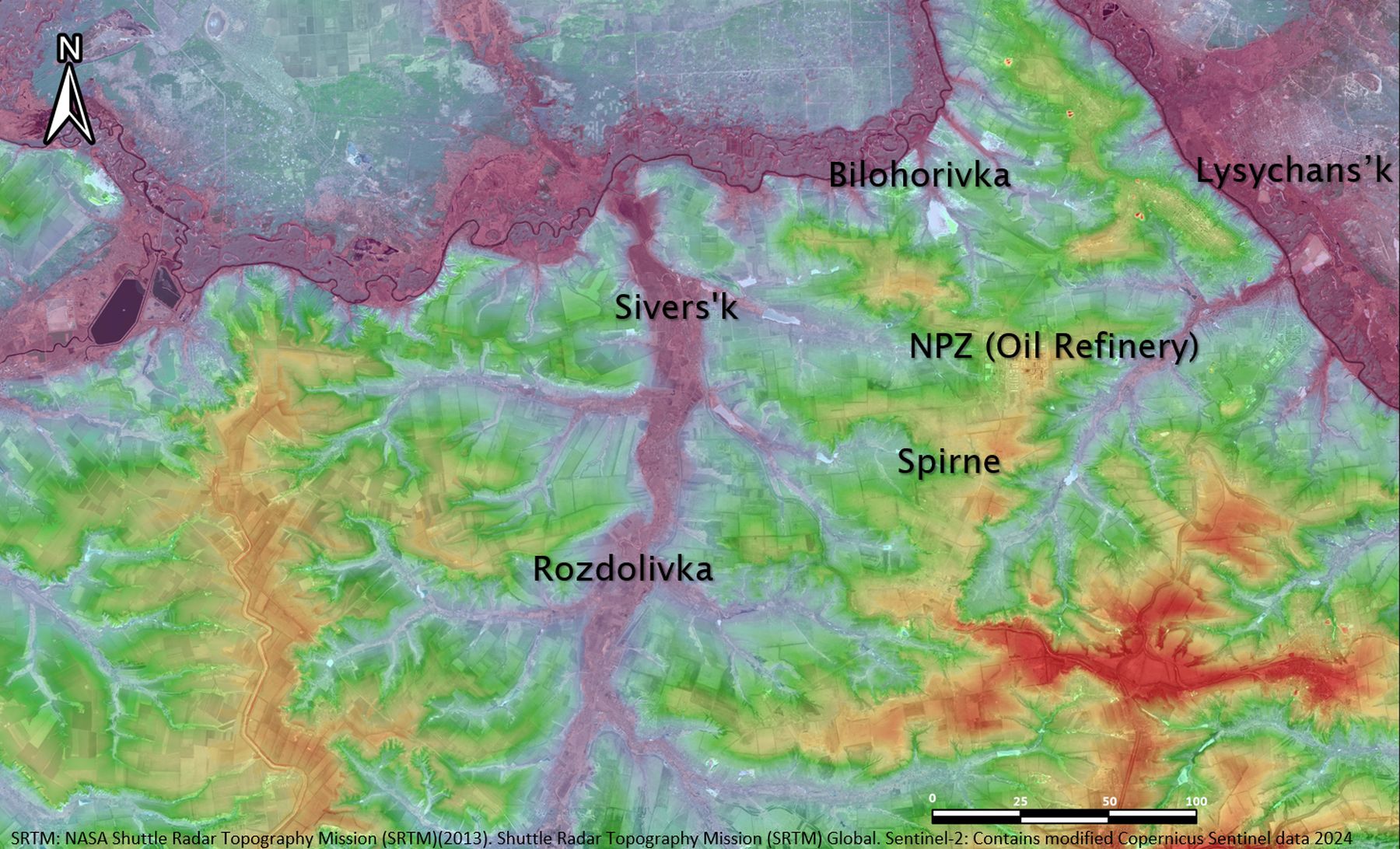
Initially, the topography of the area favored Ukrainian troops - as can be seen on the elevation map, where higher altitudes are represented by warm colors like red, and lower altitudes by cooler colors like blue. However, as the Russians advanced over the course of the year, a significant change occurred. Currently, many elevated positions in the Bilohorivka area are under Russian control, posing a significant challenge to the city's defense.
Force disposition: prevailing Russian forces held back by smaller Ukrainian contingent
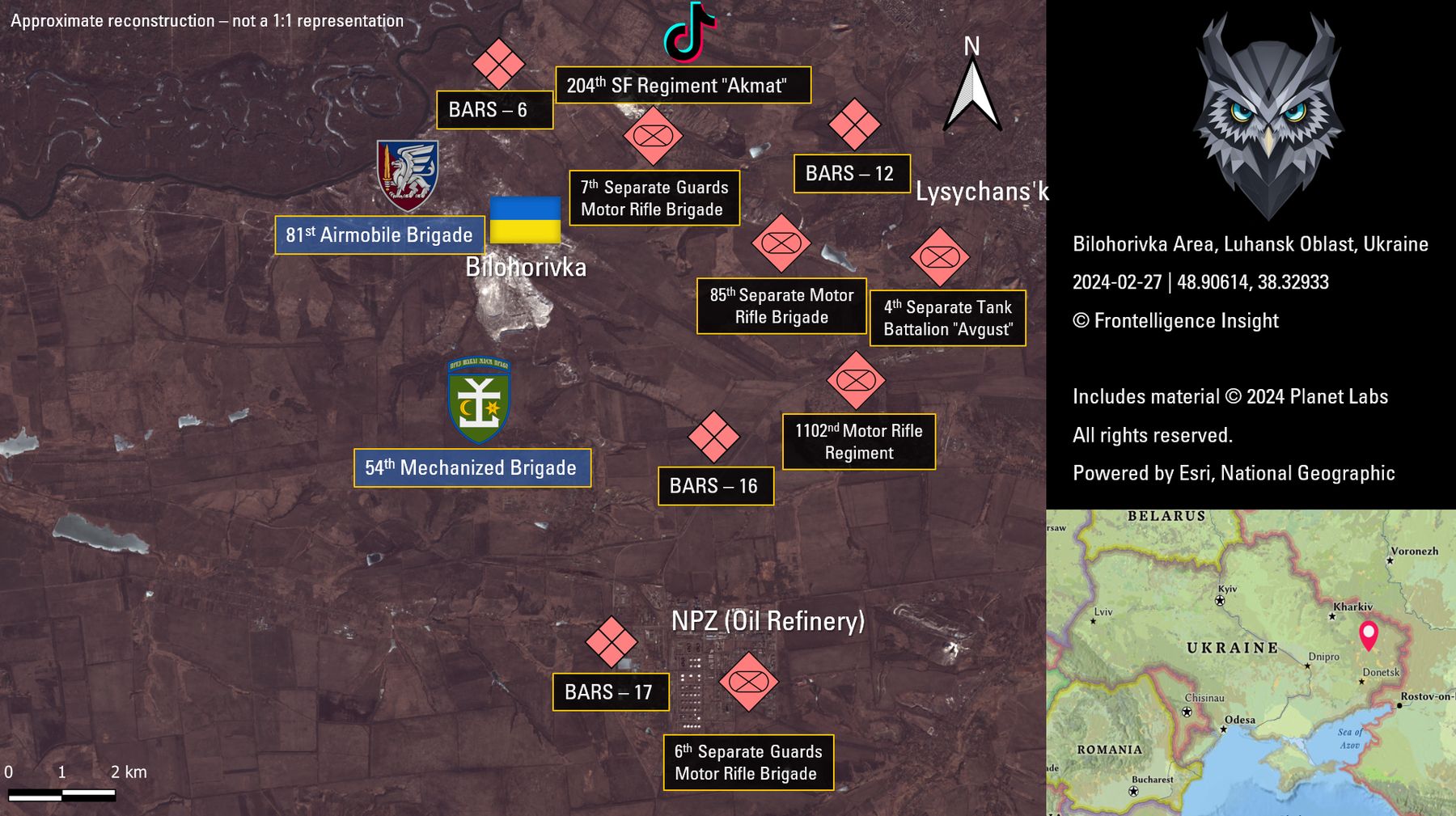
On the Ukrainian side, the defense in the Bilohorivka area is primarily entrusted to the 54th Mechanized Brigade, the 81st Airmobile Brigade, alongside other units from different branches and services.
The Russians deployed a significantly larger force, including the 7th, 6th, and 85th Separate Motor Rifle Brigades, along with the 6th, 12th, 16th, and 17th Army Reserve Battalions.
Additionally, the 4th Separate Tank Battalion "Avgust" and the 1102nd Motor Rifle Regiment contribute to the formidable enemy presence. As previously noted, the rear areas are held by the 204th Special Force Regiment "Akhmat."
Ukraine’s 10th Mountain Assault Brigade protects the southern flank of Siversk, strengthened by elements from other units. This flank is mostly assaulted by elements of the 123th Separate Motor Rifle Brigades, as well as the 51st Guards Airborne Regiment.
In addition to their numerical superiority in deployed units, Russian forces possess a considerably larger number of vehicles, and notably, a significant advantage in both artillery and available artillery ammunition. This advantage allows the Russians to concentrate artillery fire, systematically dismantling fortified positions, and gradually wearing down defenders through recurrent assaults.
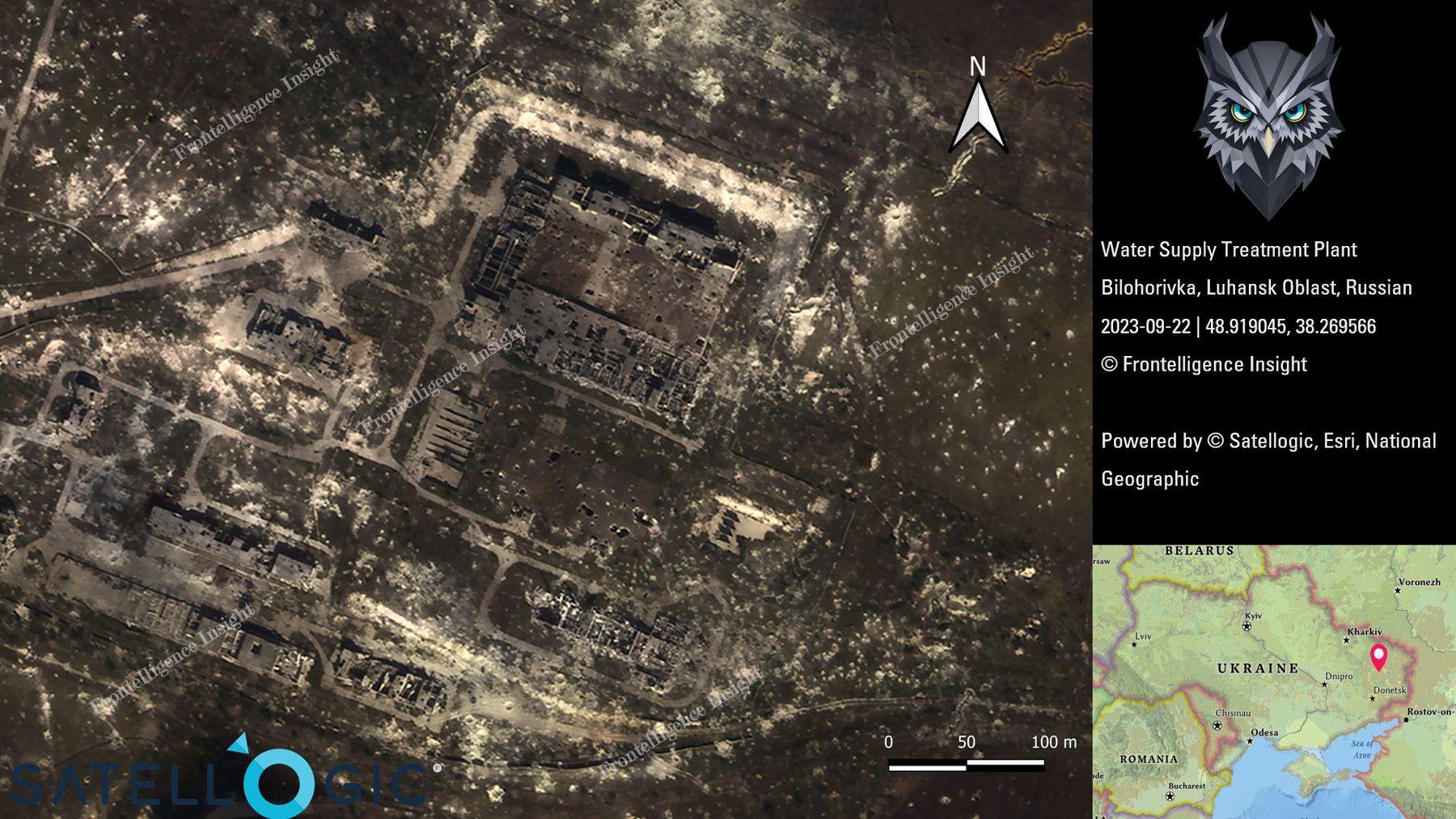
Locations such as the water treatment plant on the outskirts of Bilohorivka frequently turn into highly contested areas, as seen in the photos – the numerous craters and destruction of buildings reveal intense battles for control of the facility.
Due to the challenging terrain and fortified positions, coupled with deployed minefields and stiff resistance, Russian forces have faced difficulties in advancing.
Concurrently, Russia tried exploring alternative approaches, attempting to assault Bilohorivka from multiple directions, mostly focusing on exerting pressure on topographically advantageous points. Although such a situation has proven relatively effective for Ukraine in terms of attrition, there is an observable gradual shift in the balance of forces, favoring Russia.
Combat analysis: How Bilohorivka holds the line while facing incessant Russian assaults
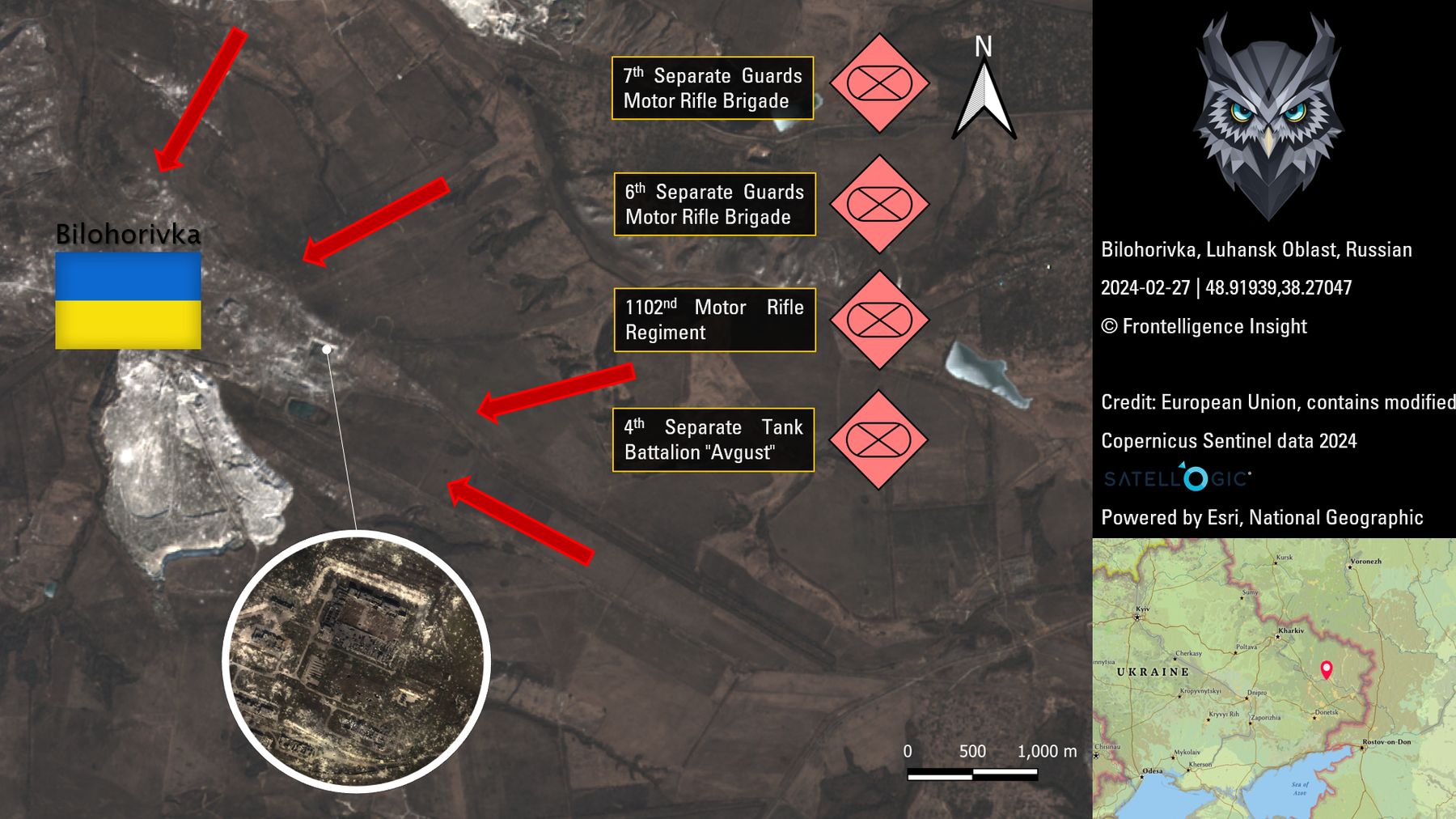
Since the start of this year, the eastern flank of Bilohorivka has been targeted by assaults, primarily orchestrated by the 6th and 7th Separate Guards Motor Rifle Brigades, the 4th Separate Tank Battalion, and the 1102nd Motor Rifle Regiment. Typically, these assaults involve approximately a company-sized force supported by several vehicles, including a limited number of BMPs and one or two tanks.
Notably, in 2023, Russian forces significantly intensified efforts to enhance the number of FPV (First Person View) drones in the area.
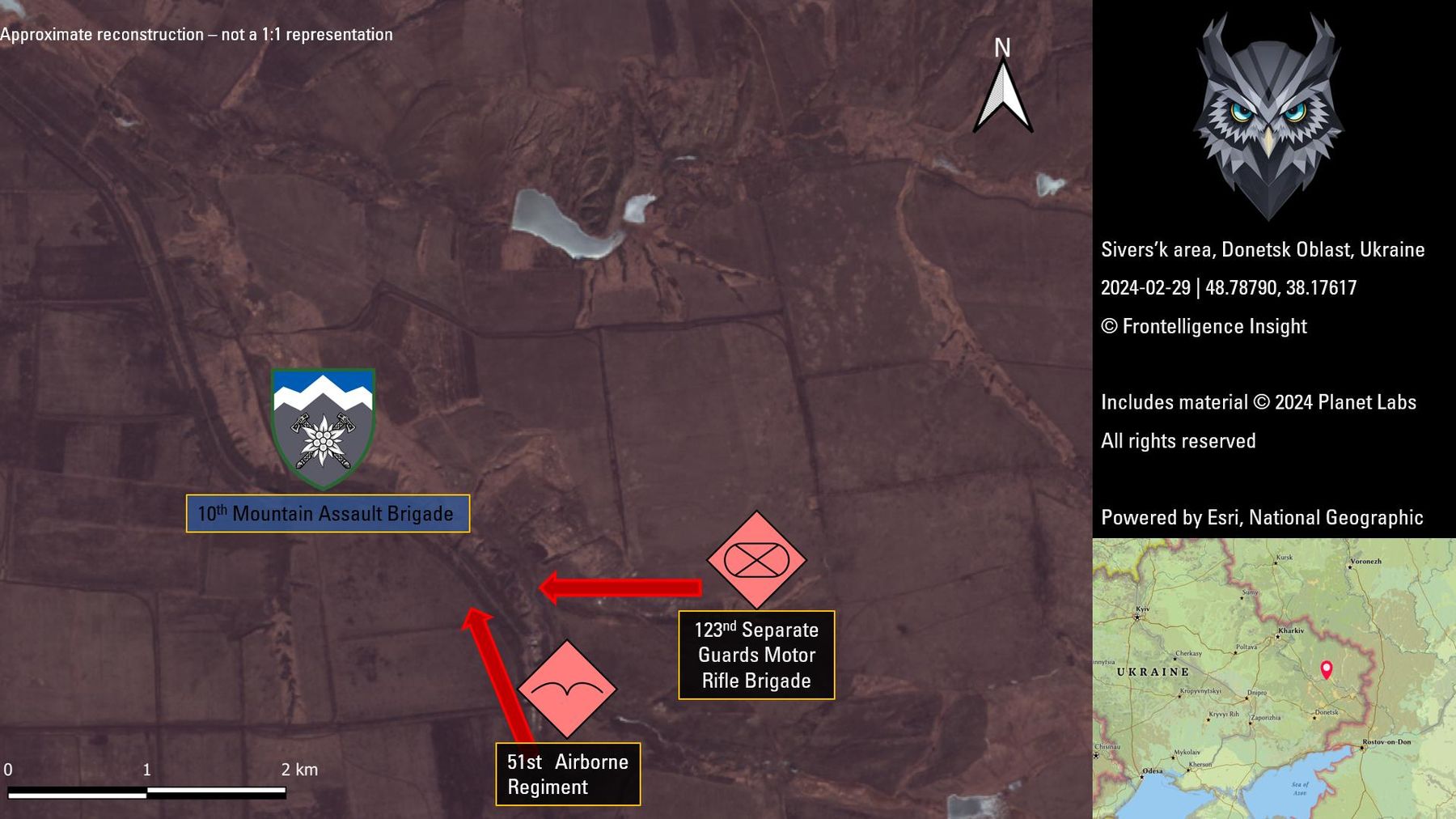
The southern flank is mostly assaulted by elements of the 2nd and 123rd Separate Motor Rifle Brigades, as well as the 51st Guards Airborne Regiment. In recent weeks, Russians have made multiple attempts to breach Ukrainian defenses in this area, but they have not been able to achieve any significant progress.
Based on multiple months of active assaults, the overall pattern can be identified as follows:
1, Russians initiate reconnaissance of the area using UAVs and collect intelligence through technical means.
2. Preceding the assault, Russians deploy KAB (guided air-dropped bombs) against Ukrainian positions and proceed with artillery preparatory shelling.
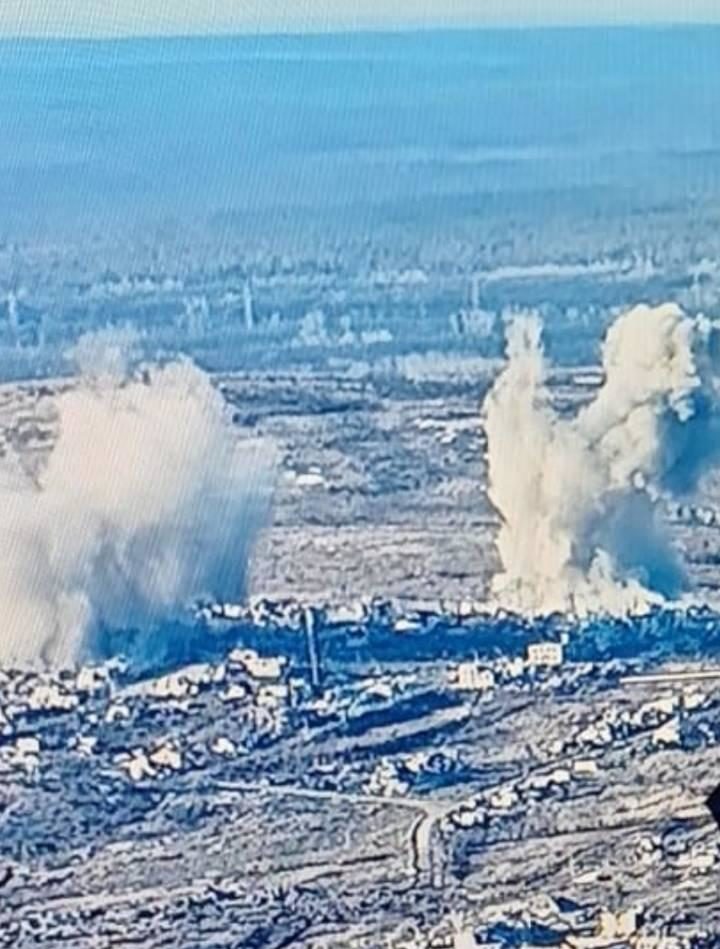
3. A small number of Russian forces, ranging from a squad to a company in size, advances either on foot or mounted atop vehicles. During the move, Russians try to decrease risks associated with FPV drones, equipping vehicles with electronic warfare (EW) systems like "Lorandit."
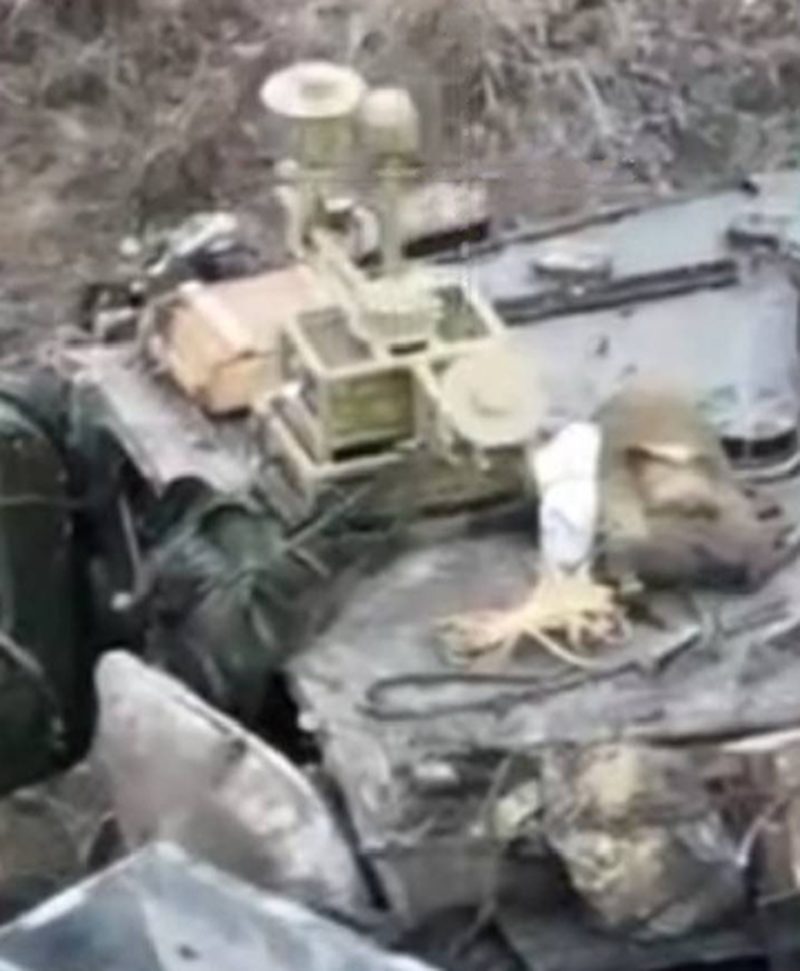
4. Upon encountering initial contact or reaching approximately 50 to 150 meters from Ukrainian positions, attacking units swiftly dismount and proceed to assault, supported by FPV drones and tank fire, if available.
5. Additionally, in efforts to induce chaos and compel Ukrainians to abandon their positions, Russians occasionally deploy chemical grenades containing riot control agents.
As a rule, Russians aim to swiftly seize positions and promptly fortify themselves. The constrained artillery resources at Ukraine's disposal make it difficult to compel Russians to evacuate newly acquired positions.
Regrettably, this often necessitates resorting to infantry counterassaults, which, while effective, come at a higher cost compared to the more straightforward option of artillery shelling.
These attacks, while relatively small in scale, are consistent and frequent. When combined with aerial bomb drops, artillery strikes, and drone deployments, these assaults prove to be considerably taxing. Notably, during the latest attack involving 2 tanks and 8 armored vehicles, Russians employed 15 FPV drones against a single defense position.
A brief timeline with examples of such assaults:
1, 14-15 January: Four BMPs accompanied by mounted infantry. After substantial losses in both BMPs and infantry, the Russians abandoned the mission.
2. First half of February: Russian attempts to assault primarily with infantry, minimizing the use of vehicles.
3. 17 February - Deployment of 1 tank + 2 BMPs with infantry, resulting in partial tactical success.
Trending Now
4. 18-20 February: Continued assaults with additional infantry, no vehicles involved
5. 21 February: Four BMPs from Shipilivka set out to assault Ukrainian positions. One BMP was lost, and two others sustained damage, prompting a retreat.
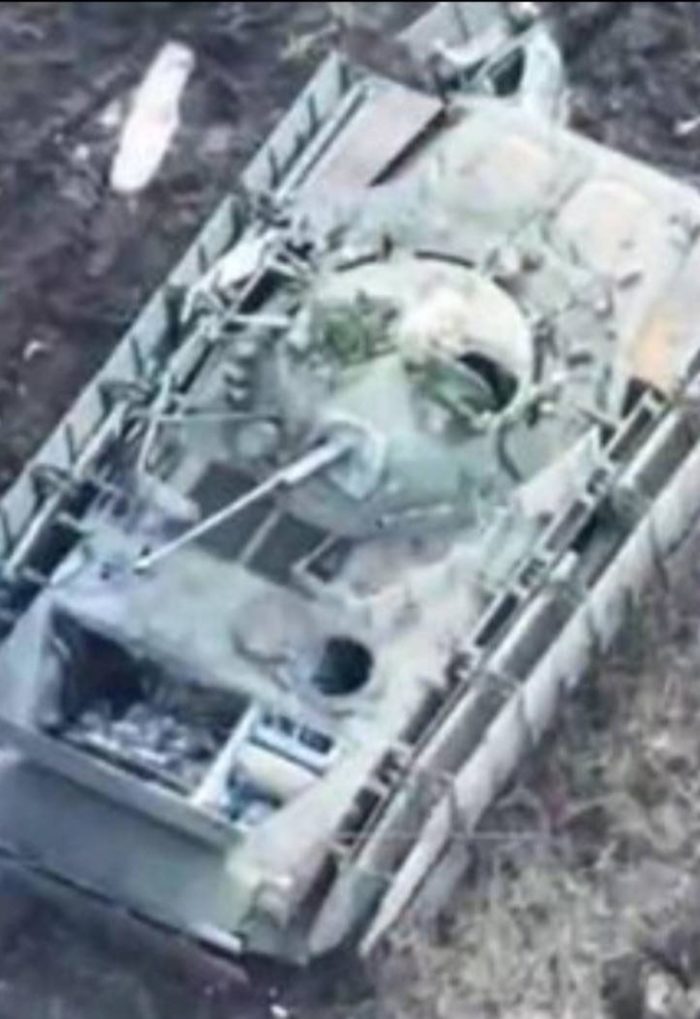
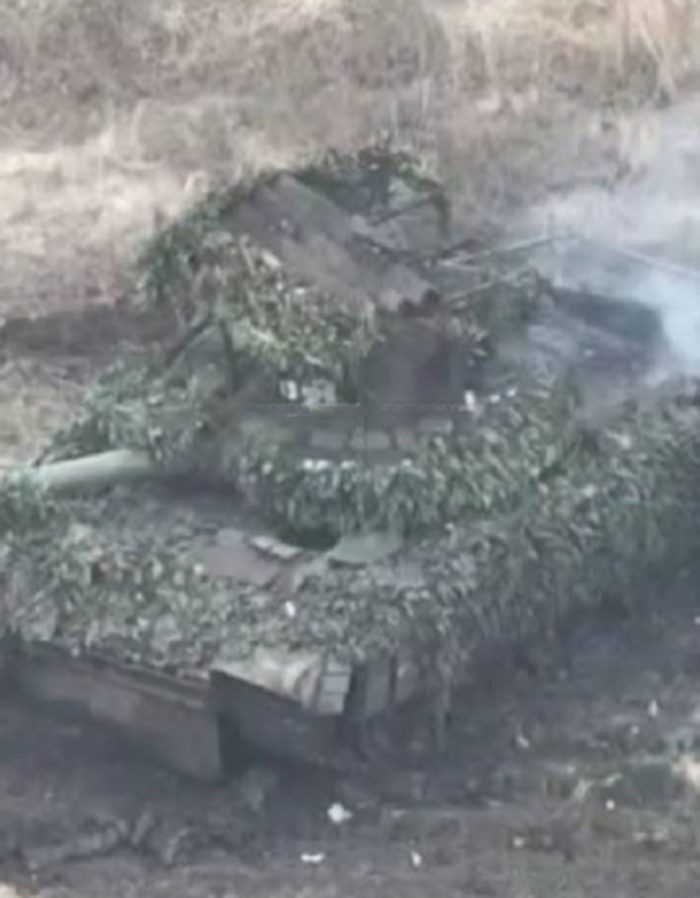
By employing platoon-sized units, the Russians adopt gradual tactics to wear down Ukraine’s defenders.
Each casualty or injury among the Ukrainian defenders has a tangible impact, diminishing the rotation pool and consequently thinning the defensive lines.
Once Russians sufficiently soften a specific area, they concentrate a larger, company-sized force to exploit potential vulnerabilities.
While the defenders have been able to successfully deflect Russian attacks thus far, the exhaustion effect on defenders is tangible.
Key factors that will shape the battlefield in Ukraine in 2024
The key factors that shape the battlefield extend beyond ammunition, drones, vehicles, and personnel. Their relevance may fluctuate as the war progresses, but they are expected to remain important in the ongoing battle for the Siversk-Bilohorivka area
The Frontelligence Insight team has identified them as follows:
1. KAB - Guided air-dropped bombs
The growing production of KABs in Russia has resulted in a gradual escalation in the number of strikes. Despite their relative inaccuracy, the precision of KABs has improved over time. Ukraine faces a significant challenge in countering KABs, given that the drop distance exceeds the effective range of most of its Short-Range Air Defense (SHORAD) systems. While Ukraine does possess Anti-Aircraft (AD) defenses like the Patriot complex, their limited numbers are insufficient to adequately cover the majority of frontline areas.
2. Electronic warfare impact
The emergence of FPV drones has introduced a dynamic where even multi-million-dollar vehicles are susceptible to destruction by relatively inexpensive $500 drones. This shift has significantly influenced the battlefield, altering the traditional utilization of vehicles. In certain instances, the saturation of FPVs on the battlefield has relegated vehicles to a minimal role, primarily functioning as transport—delivering, deploying, and promptly retreating to minimize the risk of destruction.
Notably, there is a discernible trend wherein conventional Russian vehicles, such as BMPs and tanks, are increasingly equipped with Electronic Warfare (EW) modules. These modules aim to disrupt FPV communication with operators, reflecting an adaptive response to the evolving threat landscape. As the conflict persists, the efficacy of these EW modules is anticipated to improve, become more standardized, and be deployed across a broader spectrum of vehicles.
3. Mine warfare challenges
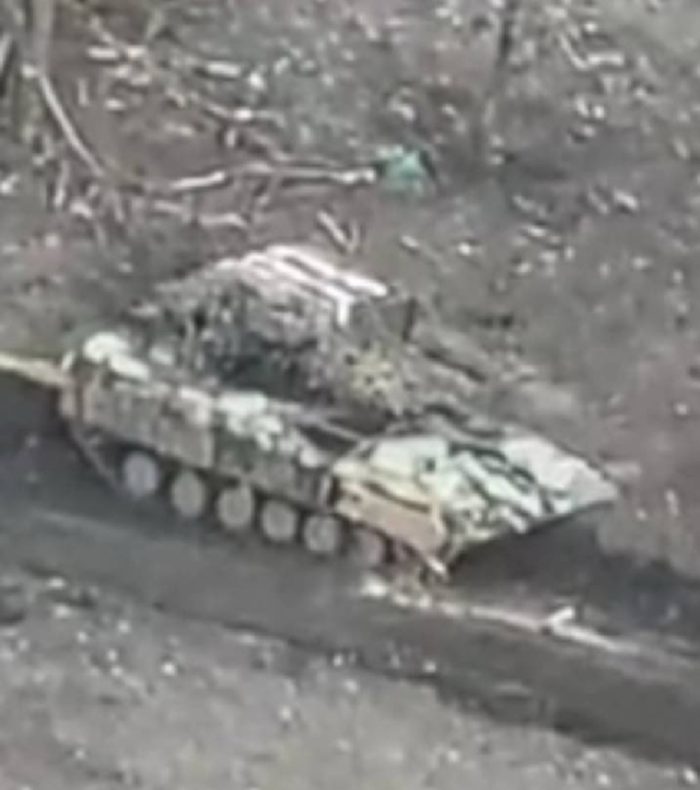
Mines, a scourge of past wars like WWI and WWII or guerrilla tactics, plague the Russo-Ukrainian war as well. However, drones have rendered existing demining doctrines obsolete.
Deploying demining vehicles is complicated as they risk detection by drones several kilometers away from the target area. Additionally, their short operational range makes them susceptible to ambushes by FPVs or anti-tank teams.
Another approach involves the deployment of anti-mine rollers, which are devices attached to the front of armored vehicles. These rollers are designed to neutralize mines and improvised explosive devices (IEDs) before the vehicle's tracks encounter them. However, this method has its drawbacks, as it can significantly reduce the speed and maneuverability of tanks, two essential characteristics for avoiding easy detection and targeting in typical combat scenarios.
Russia’s ample placement of minefields impedes the maneuverability of Ukraine’s assaulting forces. Moreover, in situations where Ukraine needs to traverse a mined field for a counter-attack, the process of demining to create safe passages becomes time-consuming and perilous. Russia then can easily detect Ukrainian sappers, making them easy targets for strikes.
This goes the other way around. Consequently, the heavy mining of Ukraine’s southeast leads to a more static and positional mode of war.
4. Significance of fortifications
Well-constructed and concealed fortifications can be important and even decisive for offensive operations, as was evident during Ukraine’s unsuccessful summer 2023 counter-offensive. Meticulously prepared defenses substantially elevate the number of artillery shells required to inflict casualties or damage. Russian forces try to build new fortifications after seizing territories as soon as possible, rendering counter-attacks challenging.
This approach transforms the terrain into a multi-echeloned defense system, where each successful attack by the Russians establishes a new tactical defensive line.
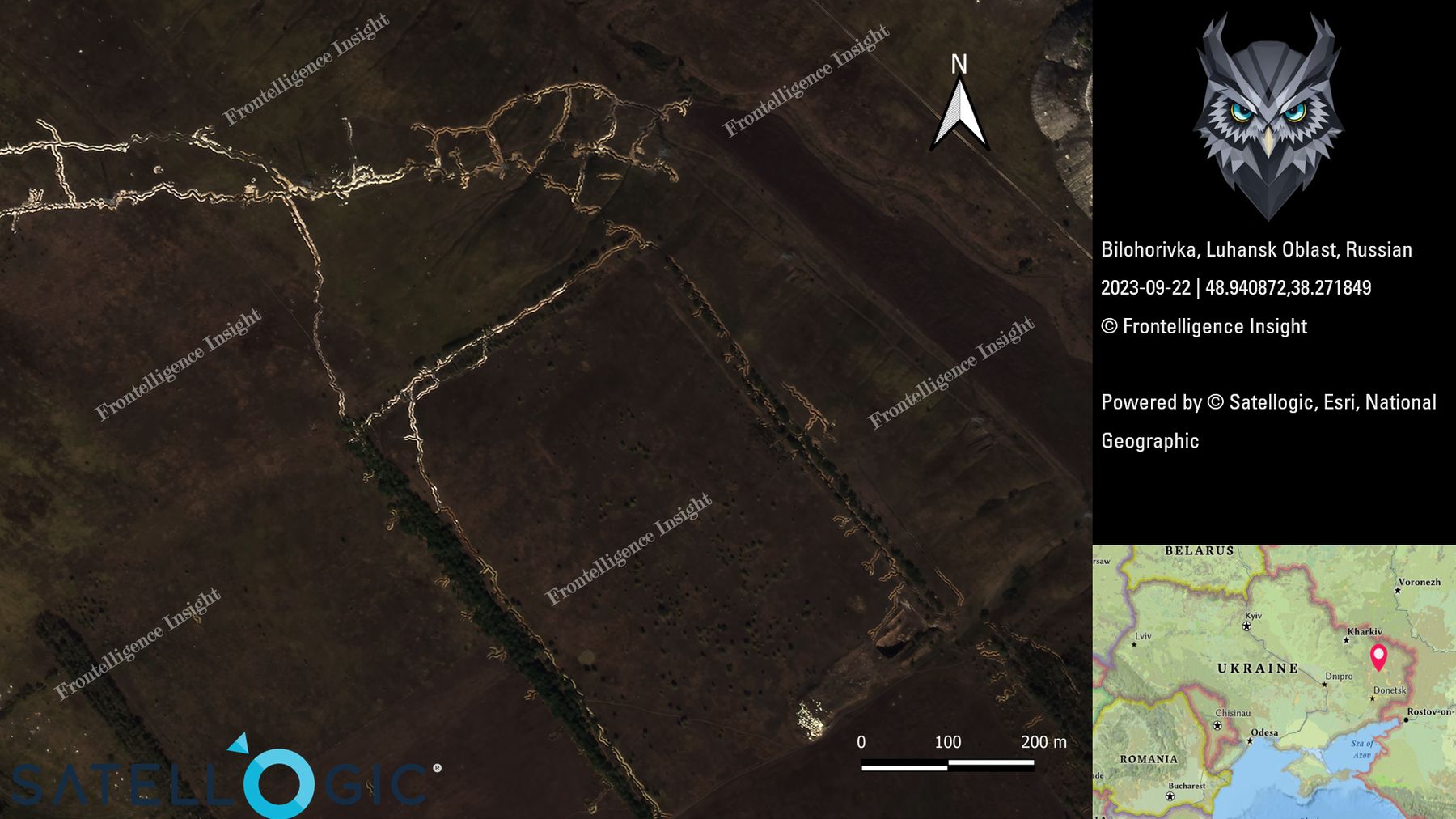
In the case of Bilohorivka, the establishment of numerous trenches near Ukrainian positions is one of the key reasons why this area seems to be static. These defensive structures not only enhance resilience but also contribute to the creation of layered defensive networks, complicating the adversary's efforts to penetrate and advance.
Bilohorivka: a microcosm of Ukraine's defense strategy
Locations such as Bilohorivka offer a more representative perspective than places like Avdiivka. Unlike Avdiivka, where defenses have been prepared and organized since 2014, Bilohorivka provides a better opportunity for analyzing the generalized frontline and extrapolating from the experiences gained.
This leads us to the final question: what lessons can be gleaned from Bilohorivka for the big picture?
The focus of 2024 is likely to center around three critical factors:
- fortifications;
- manpower;
- ammunition.
The Bilohorivka defense showcases Ukraine's ability to slow down and exhaust Russian troops, inflicting sufficient damage to impede Russian political objectives, such as the complete occupation of the Donbas region. The Siversk area, particularly Bilohorivka, successfully held Russian forces at bay for over a year with minimal territorial changes, despite facing ongoing personnel shortages exacerbated by recent ammunition shortages.
To regain offensive capabilities for 2025, Ukraine must undertake another mobilization while also rotating, training, and reorganizing its troops. Moreover, support from the West will be essential for Ukraine's offensive in 2025.
Ukrainians cannot afford to employ the same small tactical group exhaustion approach as the Russians due to factors like insufficient artillery ammunition and mobilization resources.
Consequently, Ukrainian forces may need to entrench themselves to buy critical time in 2024. As demonstrated by the Bilohorivka case, this approach can only succeed if Ukraine effectively constructs and staffs fortifications while preventing Russian advances through the use of minefields and artillery fire.
The challenge posed by the extensive use of KABs is likely to persist, and a resolution may only come through the additional procurement and deployment of Patriot air defense systems and F-16s equipped with advanced air-to-air missiles.
Training for both Patriot and F-16 systems requires a significant amount of time, hence even if Ukraine were to secure an additional batch of these weapons today, it would still take time to train personnel and organize logistics for their deployment.
This further proves that Ukraine needs investment not only in fortified defense positions but their concealment as well.
Related:

